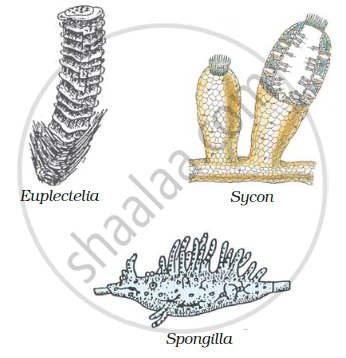Topics
Heredity and Evolution
- Heredity or Inheritance
- Protein Synthesis
- Transcription, Translation and Translocation
- Protein Synthesis
- Protein Synthesis
- Organic Evolution
- Theories of Origin of Life
- Evolution and Classiffication
- Evidences for Biological Evolution
- Darwinism
- Lamarck’s Theory of Evolution
- Speciation
- Human Evolution
Life Processes in Living Organisms Part -1
- Living Organisms and Life Processes
- Living Organism and Energy Production
- Formation of ATP
- Energy Production in Living Organism
- Cell Division: an Essential Life Process
- Mitosis and Its Phases
- Phases of Mitosis: Karyokinesis (Division of Nucleus)
- Phases of Mitosis: Cytokinesis (Division of Cytoplasm)
- Significance of Mitosis
- Meiosis as a Reduction Division
- Stages of Meiosis: Meiosis I
- Stages of Meiosis: Meiosis II
- Significance of Meiosis
- Differences Between Mitosis and Meiosis
Life Processes in Living Organisms Part - 2
- Introduction to Life Processes in Living Organisms
- Asexual Reproduction in Animal
- Fission
- Fragmentation
- Regeneration
- Budding
- Sporulation (Sporogenesis)
- Asexual Reproduction in Plant
- Budding
- Vegetative Reproduction
- Reproduction
- Sexual Reproduction in Flowering Plants
- Sexual Reproduction in Animals
- Human Reproduction
- The Male Reproductive System
- The Female Reproductive System
- Gametogenesis
- Fertilization in Human
- Embryonic Development in Human
- Implantation in Human
- Pregnancy in Humans
- Placenta (Growth) in Human
- Parturition (Birth) in Human
- Menstrual Cycle (Ovarian Cycle)
- Reproduction and Modern Technology
- Reproductive Health
Environmental Management
- Our needs and the Environment
- Ecosystem
- Structure and function of an Ecosystem
- Relationship Between Environment and Ecosystem
- Environmental Balance
- Environmental Conservation
- Environmental Conservation and Biodiversity
- Endangered Species
Towards Green Energy
- Energy and Use of Energy
- Generation of Electrical Energy
- Heat Energy (Thermal Energy)
- Nuclear Energy
- Natural Gas Energy
- Electric Energy Generation and Environment
- Hydroelectric Energy
- Wind Energy
- Solar Energy
- Solar Energy
Animal Classification
- Biological Classification
- Classification of Living Organisms
- Taxonomic Hierarchy of Living Organisms: Unit of Classification
- New Criteria for Basis of Classification
- History of Animal Classification
- Traditional Method of Animal Classification
- Five Kingdom Classification
- Phylum: Porifera
- Phylum: Cnidaria/Coelenterata
- Phylum: Platyhelminthes
- Phylum: Aschelminthes
- Phylum: Annelida
- Phylum: Arthropoda
- Phylum: Mollusca
- Phylum: Echinodermata
- Phylum: Hemichordata
- Phylum: Chordata
- Kingdom Animalia
- Chordata: Vertebrata
Introduction to Microbiology
- Microorganisms (Microbes) and Microbiology
- Applied Microbiology
- Industrial Microbiology
- Useful micro-organisms
Cell Biology and Biotechnology
- Cell Biology (Cytology)
- Stem Cells
- Organ Transplantation
- Organ and Body Donation
- Biotechnology
- Commercial Applications of Biotechnology
- Modern Agricultural Practices and Crop Improvement
- Important Stages in Agricultural Development
Social Health
- Social Health
- Factors Disturbing the Social Health
- Communication Media and Excessive Use of Modern Technology
- Stress Management
Disaster Management
- Disaster
- Effects of Disaster
- Nature and Scope of Disaster
- Disaster Management
- Classification of Disaster Management
- Disaster Management Cycle
- Structure of Disaster Management Authority
- First Aid and Emergency Action
- Mock Drill
Life's Internal Secrets
The Regulators of Life
- Coordination in Plants - Introduction
- Control and Co-ordination in Plants
- Human Nervous System
- Central Nervous System (CNS)
- Chemical Control
The Life Cycle
Mapping Our Genes
Striving for Better Environment 2
- Use of Efficient and Eco-friendly Technology
- Sustainable Use of Resources
- Enforcement of Acts, Laws and Policies
Understanding Metals and Non-Metals
Amazing World of Carbon Compounds
- Kingdom Animalia
- Characteristics of Kingdom Animalia
Notes
Animalia
Kingdom Animalia is composed of all animals. The animal kingdom is the largest kingdom among the five kingdoms. Animals are multicellular eukaryotes. But they don’t have a cell wall or chlorophyll like plants. Hence, members of the animal kingdom have a heterotrophic mode of nutrition. Kingdom Animalia has been classified into 10 different subphyla based on their body design or differentiation.
The different subphylum of the animal kingdom are as follows:
-
Porifera
-
Coelenterata (Cnidaria)
-
Platyhelminthes
-
Nematoda
-
Annelida
-
Arthropoda
-
Mollusca
-
Echinodermata
-
Protochordata
-
Vertebrata
Porifera
Porifera means organisms with holes. They are commonly known as Sponges. Features of the poriferan are:
-
Non-motile, multicellular organisms with the hard outer skeleton.
-
Have a porous body.
-
Pores on the bodies create a canal system which helps in the circulation of substances.
-
Not differentiated into head and tail; don’t have a well-developed organ or organ system.
-
Include Marine Habitat.
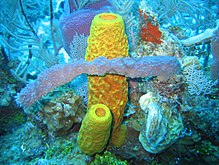
Example of subphylum Porifera includes- Spongilla, Sycon, etc.
Coelenterata (Cnidaria)
The term Coelenteratais derived from the Greek word “kilos” which means hollow-bellied. Their features are:
-
Have a hollow body cavity.
-
The body is differentiated into two ends.
-
Includes all aquatic animals.
-
The body is made of two layers of cells: inner and outer linings.
-
Live in colonies (corals) as well as solitary (Sea anemone).
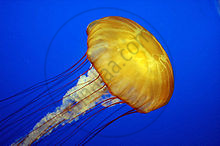
Example of subphylum Coelenterata includes – Hydra, Jellyfish, etc.
Platyhelminthes
Platyhelminthes are commonly known as flatworms. Their features are:
-
Dorsoventrally flattened body.
-
Complex and have differentiated body structure.
-
Tissues are differentiated from three layers of cells and are triploblastic.
-
Don’t have true internal cavity or coelom.
-
Have bilateral symmetry.
-
Either free-living (Planaria) or parasitic (Liver flukes).

Example of subphylum Platyhelminthes includes -Tapeworm, Planaria, etc.
Nematoda
Phylum Nematoda consists of nematodes or roundworms. Their features are:
-
Nematodes have a cylindrical body.
-
Bilaterally symmetrical and triploblastic.
-
Have pseudocoelom, a false body cavity.
-
Parasitic and causes diseases such as elephantiasis, ascariasis, etc.
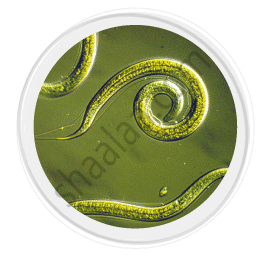
Example of subphylum Nematoda includes – Ascaris, Wuchereria, etc.
Annelida
Annelids are commonly known as segmented or ringed worms. They have the following features:
-
Have a segmented cylindrical body.
-
The body is differentiated into head and tail.
-
Bilaterally symmetrical and triploblastic.
-
Have a true body cavity.
-
Habitat: marine, freshwater, and land.

Example of subphylum Annelida includes – Earthworm, Leech, etC.
Arthropoda
Arthropod means jointed legs. Animals which have jointed appendages belong to this phylum. This is the largest phylum in the animal kingdom. Other features are:
-
They are bilaterally symmetrical.
-
Have jointed appendages, exoskeleton, and a segmented body.
-
Have well-differentiated organ and organ system.
-
Have an open circulatory system, but don’t have differentiated blood vessels.
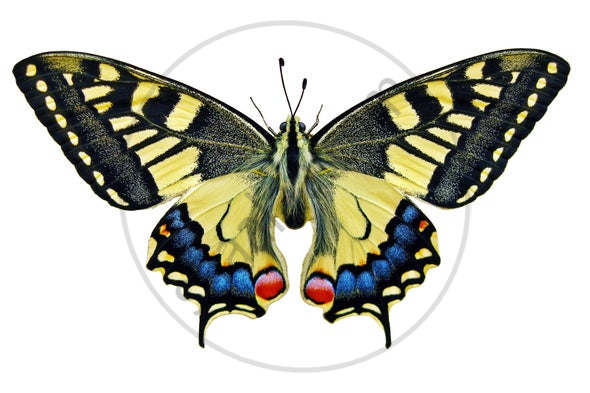
Example of subphylum Arthropoda includes – Spiders, butterflies, and mosquitoes.
Mollusca
Phylum Mollusca consists of a large group of animals. Features are:
-
Bilaterally symmetrical and triploblastic.
-
Less segmented body.
-
Well-developed organ and organ system.
-
Open circulatory system.
-
Limbs are present.
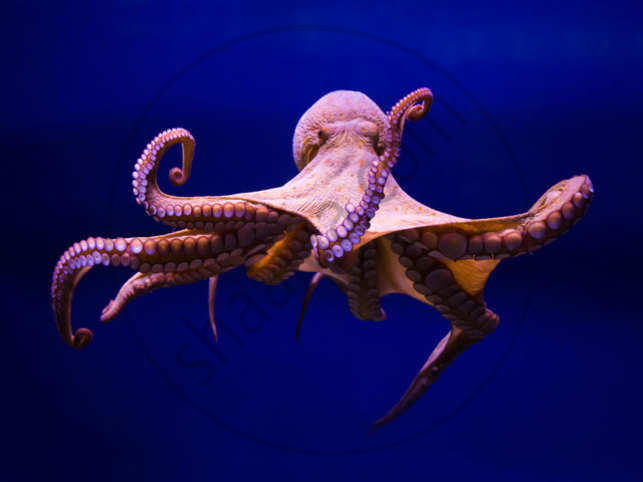
Example of subphylum Mollusca includes- Snails and octopus.
Echinodermata
The term Echinodermata is derived from the Greek words, echinos meaning hedgehog and derma meaning skin. Thus, echinoderms are spiny-skinned animals.
-
Radial symmetry and triploblastic.
-
Have true coelom.
-
Have hard calcium carbonate skeleton structure.
-
Free-living marine animals.
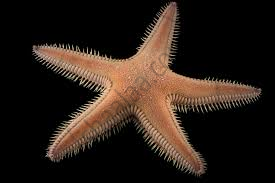
Example of subphylum Echinodermata includes- Sea urchins, starfish, etc.
Protochordate
Protochordates have the following features:
-
Bilaterally symmetrical and triploblastic.
-
Have true coelom.
-
Habitat: marine.
-
The notochord is present at some stages of lives.

Example of subphylum Protochordates includes- Balanoglossus, etc.
The notochord is a long supporting structure that separates the nervous tissues from the gut. It runs along the back of an animal and is a place for muscle attachment that helps in movement.
Vertebrata
Phylum Vertebrata consists of animals with a true vertebral column. They have an internal skeleton where muscles are attached and help in movement. Other features are:
-
Bilaterally symmetrical, triploblastic, coelomates and the segmented body.
-
The body design is complex and well-differentiated.
-
The body has an organ and organ system level of organization.
-
Possess notochord.
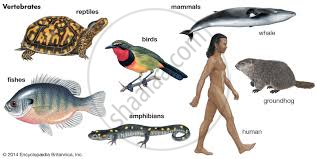
Vertebrates are further grouped into five classes.
- Pisces
- Cyclostomata
- Amphibia
- Reptilia
- Aves
- Mammalia
PISCES
- These are fish. They are exclusively aquatic animals. Their skin is covered with scales/ plates. They obtain oxygen dissolved in water by using gills.
- The body is streamlined, and a muscular tail is used for movement.
- They are cold-blooded and their hearts have only two chambers, unlike the four that humans have. They lay eggs.
- We can think of many kinds of fish, some with skeletons made entirely of cartilage, such as sharks, and some with a skeleton made of both bone and cartilage, such as tuna or rohu.
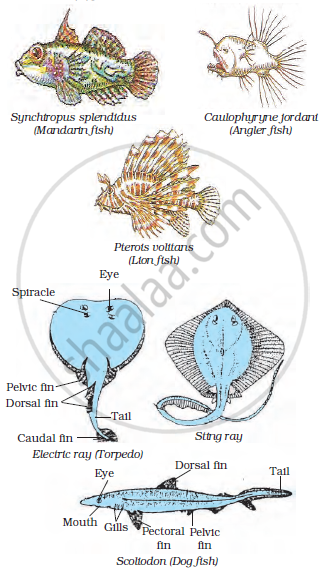
CYCLOSTOMATA
- Cyclostomes are jawless vertebrates. They are characterised by having an elongated eel-like body, circular mouth, slimy skin and are scaleless.
- They are ectoparasites or borers of other vertebrates.
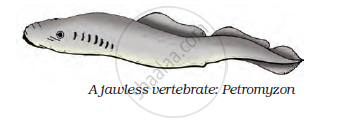
Example: Petromyzon (Lamprey) and Myxine (Hagfish)
AMPHIBIA
- These animals differ from the fish in the lack of scales, in having mucus glands in the skin, and a three-chambered heart.
- Respiration is through either gills or lungs.
- They lay eggs.
- These animals are found both in water and on land.
Frogs, toads and salamanders are some examples.
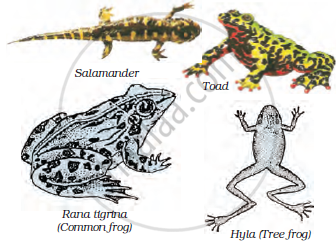
REPTILIA
- These animals are cold-blooded, have scales and breathe through lungs.
- While most of them have a three-chambered heart, crocodiles have four heart chambers.
- They lay eggs with tough coverings and do not need to lay their eggs in water, unlike amphibians.
- Snakes, turtles, lizards and crocodiles fall in this category.
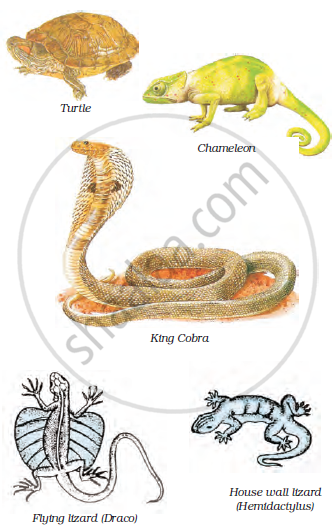
AVES
- These are warm-blooded animals and have a four chambered heart.
- They lay eggs.
- There is an outside covering of feathers, and two forelimbs are modified for flight.
- They breathe through lungs.
- All birds fall in this category.
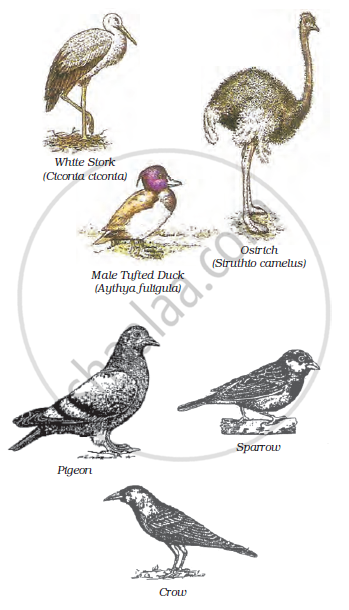
MAMMALIA
- Mammals are warm-blooded animals with four-chambered hearts.
- They have mammary glands for the production of milk to nourish their young.
- Their skin has hairs as well as sweat and oil glands.
- Most mammals familiar to us produce live young ones. However, a few of them, like the platypus and the echidna lay eggs, and some, like kangaroos give birth to very poorly developed young ones.

Notes
Animalia: Characteristics and basis of classification
-
Eukaryotic
-
Multicellular
-
Heterotrophic
-
Do not have cell-walls.
-
Most animals are mobile
Before starting the classification, let’s get familiar with few terms and the basis of criteria -
-
Grades of organization
-
Cellular grade organization - body made up of cells
-
Cell - tissue grade organization - body made up of cells forming tissues
-
Tissue-Organ grade - body made of tissues forming organs
-
Organ-system grade organization - body made of up of organs coming together (organ system)
-
-
Body symmetry
-
Asymmetry - there is no any such imaginary axis of the body through which we can get two equal halves
-
Radial symmetry - if imaginary cut passes through central axis but any plane of body, it gives two equal halves.
-
Bilateral symmetry - there is only one such imaginary axis of body through which we can get two equal halves.
-
-
Germ layers
-
Diploblastic - only two germ layers (endoderm and ectoderm)
-
Triploblastic - three germ layers (endoderm, mesoderm and ectoderm)
-
-
Body cavity (coelom)
-
Acoelomate - no body cavity
-
Pseudocoelomate - false body cavity (not present throughout the body)
-
Eucoelomate - true body cavity
-
-
Body segmentation
-
Non-segmented - body not divided into segments
-
True Segmented - body divided into small parts with repetition in organ in each part.
-
Pseudosegmented - segmented only externally and not internally.
-
1) Porifera:
-
Commonly called sponges
-
Organism with pores all over their body
-
Non-motile animals attached to some solid support.
-
Mainly found in marine habitats
-
‘Cellular grade organization
-
Mostly Asymmetric Body
-
Acoelomate
-
Body has spongin fibers
-
Water is taken in through ostia and given out through oscula.
-
They have good ability of regeneration.
-
Examples: Sycon, Euspongia
